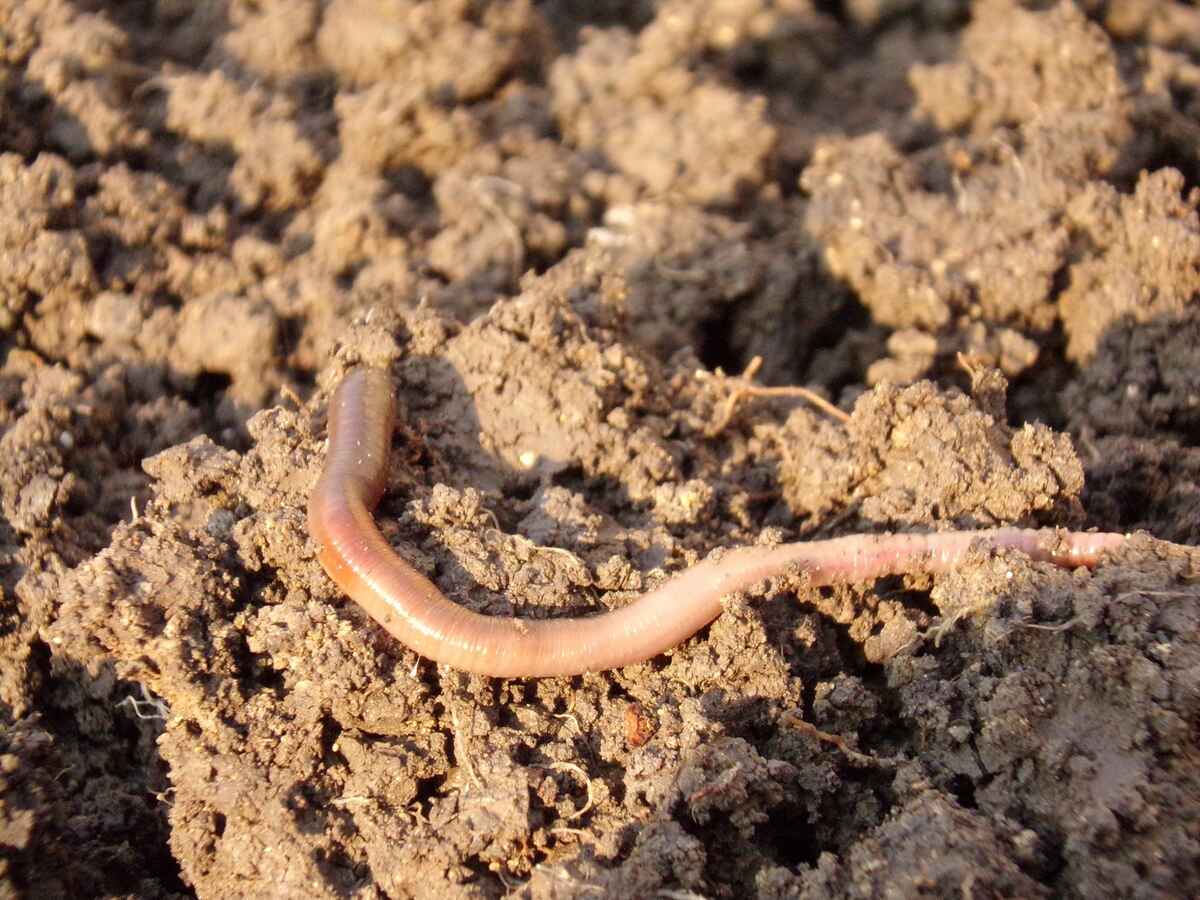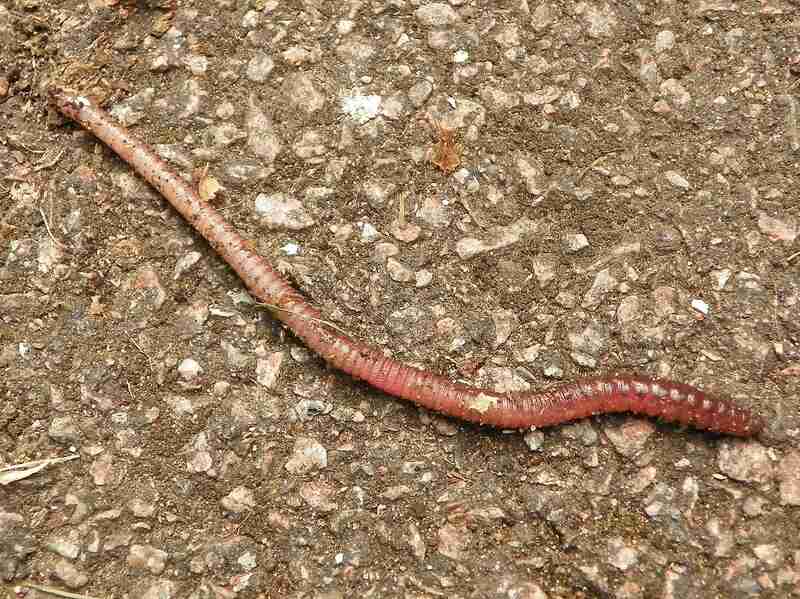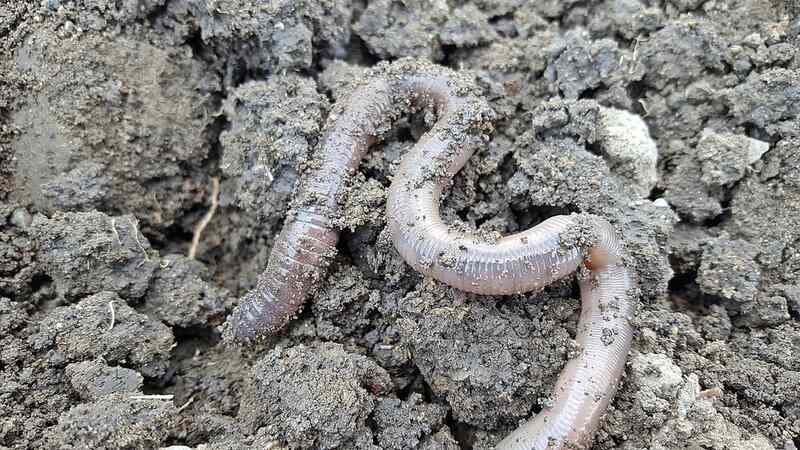
The worms crawl in … the worms crawl out … and the worms play a surprisingly valuable role in the health and fertility of your lawn! This article helps you understand how earthworms boost your lawn, grass, and topsoil for a most beautiful landscape foundation.
Many gardeners understand the benefits of earthworms in their gardens, but homeowners are less aware of how these wriggly guys help their grass, too. Here’s some information to help you understand:
How Do Earthworms Help?
More than 100 years ago, Charles Darwin began investigating the presence of earthworms to discover how important they are in soil fertility and agriculture. Lately, homeowners and gardeners have taken a keen interest in their importance in lawns and gardens.
Earthworm activity is an excellent gauge of overall soil health, and their populations have a direct relationship to plant growth and productivity. They help lawns, grass, and soil in three ways:
- They break down the soil.
- They decompose organic matter.
- They poop out amazing, free compost.
How Earthworms Help the Lawn: They Break Down the Soil
Earthworms break down and improve the overall soil structure by:
- Burrowing through the soil
- Consuming partly decomposed organic matter
- Creating tunnels that improve water infiltration and aeration
- Loosening the soil for better root growth
Their constant up-and-down movement through the soil profile also results in a tilling action of sorts that doesn’t disturb the soil surface and grass. This “tilling” continuously brings “fresh” soil up from deeper depths to where the plants are actively growing.
How Earthworms Help the Grass: Decompose Organic Matter

Earthworms do not eat turfgrass but feed on several different components:
- Grass clippings, or the thatch layer just below the turf, between the turf and the soil
- Soil
- Microorganisms
- Partially decomposed organic matter
How Earthworms Help The Soil: Poop Out Amazing, Free Compost
Earthworms excrete their waste following digestion. Earthworm castings left behind are full of nutrients that replenish the soil, no matter your soil type. Enzymatic reactions happen within their guts to change insoluble nitrogen and phosphorus to soluble nutrients for plant uptake.
Vermicomposting
Earthworms are a key player in vermicomposting, which is a variation of traditional composting. Worms and microorganisms work to break down organic materials into worm castings or “vermicast.” Vermicomposting is popular with suburban and urban gardeners who don’t have room for a backyard compost pile. It can be done in containers in the garage or kitchen instead.
But what is vermicast? Here’s the gardener’s explanation: a nutrient-rich organic fertilizer and soil amendment that’s just as good for your lawn as for your garden. Vermicast performs the same functions as the “black gold” that comes from a dedicated compost pile.
In a pile, the worms are eating the scraps from your table and weeds from your garden and adding their own organic material (poop, aka castings). Bonus: While tunneling in the vermicompost bin, they create air spaces necessary for healthy soil structure.
Not a Hole-In-One For Everyone
Though gardeners think the sun shines directly on worms (actually, earthworms hate that!), there is one group of people who hate worms, because castings can interfere with the straight roll of a golf ball. The horror.
The U.S. Golf Association considers the presence of excessive earthworms to be a “serious and widespread” problem for golf course managers. A literal wormhole — and caddies think they have problems with moles. But for the rest of us, bring ’em on!
If you also dislike the appearance of worm poop, we have some tips on How to Manage Earthworm Castings on Your Lawn.
How to Encourage Earthworms in Your Landscape
According to Sustainable Agriculture Research and Education (SARE), your soil has excellent earthworm activity if you dig out a square foot of soil and find 10 earthworms. While earthworms won’t move a long distance to relocate, there are ways to encourage them to stick around if they are there, increasing your earthworms naturally.
- Maintain a healthy lawn by keeping it weed-free and the pest population low.
- Water the grass regularly to encourage a strong root system while not overwatering.
- Provide a constant supply of organic material like leaves, mulch, and other organic fertilizers (such as compost) for your lawn earthworms to feed on. Some homeowners sprinkle cornmeal on the soil surface to encourage earthworm populations.
- Dethatch the lawn to prevent a build-up on the top layer of soil. Earthworms need access to the soil surface, and condensed thatch prevents that.
- Do not use pesticides that can harm earthworm populations.
All About Earthworms

While most of us learn about these slimy beings as young children, earthworms are unique, interesting creatures.
- Earthworms are tube-shaped worms with ringlike segments on their bodies.
- These segments are covered in small bristles called setae that allow them to move and burrow.
- They have no internal skeleton or exoskeleton.
- Respiration occurs through their skin, breathing in oxygen and giving off carbon dioxide.
- Each individual earthworm is a hermaphrodite, carrying both male and female sex organs.
- During mating, each earthworm in the pair uses both sets of sex organs, fertilizing the eggs of both mates.
- Endogeic species of earthworms commonly live in soil; epigeic species live in moist leaf litter on the forest floor.
- Their diet consists of decomposing organic matter, commonly known as humus.
- Native United States species died out about 10,000 years ago; most U.S. earthworms are non-native, invasive species from Europe.
Nightcrawlers (Lumbricus terrestris) are the most common earthworm species found in lawns. They are brownish-red in color and grow up to a few inches long.
Where to Buy Earthworms
You can find earthworms at lawn and garden centers, and anywhere fishing bait is available for sale. You can also source them online with reputable organic worm farmers. To any knowing gardener — or lawn owner — their presence is a sure sign that your soil is in good shape and ready to host a happy, healthy lawn.
The University of New Hampshire notes that if your soil is healthy, earthworms will show up to the party on their own. So if your grass and plants are healthy, your money might be better spent on new plants!
FAQ
Yes. Earthworms compost the thin layer of thatch and other decaying materials on your turf. They turn it back into a rich soil conditioner for free. But, too much thatch is not good for your earthworms or grass. You can hire a lawn pro or purchase dethatching equipment to help the soil breathe for a healthy lawn.
Earthworms will eat seeds but prefer legumes and love partly decomposed organic waste. They rarely enjoy healthy organisms, as they prefer the flavor of decaying matter.
Earthworms reproduce at an incredible rate. In the right conditions, according to Texas A&M, eight redworms can multiply to as many as 1,500 worms in six months.
Don’t Move an Inch — Hire a Pro
Earthworms are probably one of the most effective natural composters. They work silently below, churning and enriching the earth. To see how many earthworms you have in your yard, you can take your own 12-inch by 12-inch sample and count the number of earthworms.
If you’re worn out from wrangling worms, you may not have the energy for other lawn care chores. Not to worry — connect with a local lawn care pro who can mow (or fertilize if the worm castings aren’t enough).
Main Image Credit: Pxhere